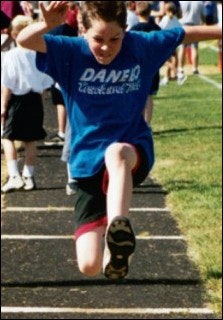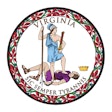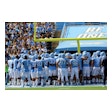Partnerships Between Municipalities and Schools Are Providing Better Facilities and Programs

Faced with growing communities and limited budgets, recreation departments and school districts often struggle to keep facilities and programs up to speed. Though not always the most obvious option, partnerships between the two entities are becoming an increasingly popular way to save money while also offering more amenities and activities to residents.
Consider the $72 million high school/community recreation center under construction in Mason, Ohio. Mason is currently the second fastest growing community in the state, and officials a few years ago knew the city would need new facilities to keep up with demand. The school district made plans to build a new high school near an existing one to avoid duplicating athletic facilities, but then wanted to add a swimming pool and other athletic amenities. At the same time, the city was considering building a community center. A partnership was born when city and school district officials realized they could each get what they wanted (and more) if they worked together.
Mason's successful pairing didn't come without some difficulties. Partnerships, because they bring together two sets of officials representing two different groups, necessitate clear communication and frequent compromises, both in the planning stages and in operation. "It's not easy," says Michael Hecker, director of the Mason Parks and Recreation Department. "You're going to have a lot of problems, because you've got people with egos, and you've got people concerned about who they represent, as they should be. You've got council members and school board members. It gets to the point where people just have to say, 'We'll trust you, you trust us, and let's do what's best.' "
In Mason, city and school officials went to great lengths to make the collaboration a success. They hired a planning consultant and held several public meetings to invite community input. Most helpful, according to Hecker, was when city council and school board members took bus trips together to tour and discuss elements of other joint facilities.
Their preparation paid off in March 2000 when taxpayers approved a school bond to fund the 154,300-square-foot joint facility. The school is slated for completion in fall 2002, and the community center is expected to open in January 2003. Dedicated community center amenities will include weight rooms; fitness rooms; an aerobics/dance studio; a leisure pool with a lazy river and a three-story water slide inside a tower; an arts-and-crafts studio, child-care and senior areas; an indoor playground; and media rooms. The school district owns the entire facility and will operate the school, the city owns the land and will operate the community center, and both entities will share a field house, a gymnasium, an auditorium and a competition pool.
Given the amount of shared space, some additional details needed to be addressed. For instance, the school district wanted a deep-water competition pool, but the community wanted a shallow end for swimming lessons, so officials decided to add a movable floor to accommodate both of their wishes. In addition, the leisure pool will be dedicated community center space, while the competition pool will be shared, so the two spaces will be separated by a glass wall. Officials have already begun scheduling shared spaces for when the facility opens.
But all the planning and scheduling has been well worth the effort, according to Hecker, because both the rec department and the two high schools are getting more and better amenities as partners than they would alone. "If we had done it ourselves, we'd probably have half of what we have now," he says. "We would never have been able to do something as large as what we're doing without coming together."
Although involved partnerships like Mason's are becoming more prevalent today, the concept of schools and recreation departments working together has actually been around for a long time. In fact, in several U.S. cities, school districts and recreation departments are one and the same. Recreation programs in Madison, Wis., for example, are run by a department, Madison School-Community Recreation, which is governed by the school district. The city-run parks department is entirely separate and manages all city-owned facilities, such as recreation centers, ball diamonds and parks.
This arrangement originated in 1926, when the city council paid the school board to form a community recreation department. Since then, the city has grown tremendously, but the system has stayed the same. The department uses schools and schools' athletic facilities for many of its programs, but also works closely with the parks department to run programs in city parks and facilities. For instance, Madison recently built a community recreation center that it operates and maintains, but it contracts with the school/recreation department for its programs.
Even though most municipalities do not have such an arrangement, many still recognize the importance of a close working relationship between recreation departments and schools. A case in point is a partnership between the King County (Wash.) Parks Department and the local Renton School District that resulted in the building of a community center directly adjacent to a middle school's existing gymnasium. Through the partnership, the school district supplied the land, and the county funded construction of the community center. In addition, the school opens the gymnasium and other existing rooms for after-school use by the community center in exchange for recreational and educational programs sponsored by the county. The county runs various youth programs after school, and then opens the center to the community on weekends.
Completed in April 1998, the 5,200square-foot community center features a game room, a full kitchen, a multipurpose room and a lounge. "It's not real large," says Terry Higashiyama, manager of King County Parks. "But the idea is that you save a lot of money by connecting it with the school to get joint use of the gymnasium and some of the internal learning spaces. It makes no sense to close schools on evenings and weekends when there are not enough gyms."
Sharing the facility takes an extra level of consideration, according to Higashiyama. "There's always a concern when two different groups are using the same area," she says. " 'Who broke the basketball hoop?' 'Who didn't put the bleachers away?' 'Was it one of the school programs, or one of our programs.' So we have to work very carefully to make sure that we have a checklist and walk through the building both before we start our programs and after we're done."
County and school district officials also believe it is important to ensure that their agendas are aligned with each other. County officials submit a programming schedule to school officials each year before school begins in the fall, and school officials review the programs and are encouraged to express any concerns they may have. In many cases, the school district will not only approve the programming, but will want to combine certain programs with some of its own. In addition, both entities make sure that their rules and policies agree. A county recreation coordinator regularly attends school staff meetings to stay up-to-date on school policies, and kids know that the rules are the same at the community center as they are at the school, Higashiyama says.
Parents especially appreciate the joint facility and its consistency from one part to the other, Higashiyama says, because they like to know that their kids can participate in supervised recreational activities after school without leaving the premises. "The school tends to be the hub of the community," she says. "It's where the kids go, it's where they're comfortable, and it's a day-to-day routine. Having your center nearby or attached to the school builds a stronger community. Kids identify with the school, and then after school, they can walk across to the center, and it's still a safe environment."
A partnership between the Eugene (Ore.) Recreation Division and the Bethel School District is also designed to keep kids on school premises for after-school recreation programs. Started in 1996 as a program for high-risk youths in grades six through eight, the after-school program, dubbed Bethel After School Happenings (BASH), has now expanded to eight of nine Bethel schools and is targeted to all youths in fourth through eighth grades. Examples of some of the after-school activities offered through BASH include rock climbing, running, wrestling, dance, and computer, science and photography classes.
The school district provides the facilities and funds the entire program, including the cost of paying about 60 staff members, while the recreation department supplies a recreation professional who hires staff and manages the program.
Sandee Belden, youth enrichment supervisor for the Eugene Recreation Division and the professional who manages BASH, says the division's relationship with the school district is very friendly and productive. "We're both getting what we want," she says of the partnership. "We build a relationship with the families through public recreation, and the school district gets to know that kids are able to stay after school and be safe." However, the partnership is also a lot of work. "I do a lot of extra work I don't get paid for, because I want the after-school programs to link to the daytime programs," Belden says.
One of the best ways to make that connection is to hire teachers and other staff members such as teachers' assistants and maintenance personnel who are already working in the building during the day, she says. "I hire a lot of them to teach after school, because truly, many of those people have a lot of talent and they never really get to use it during the day as teachers' assistants," she says. "It gives them the opportunity to do things they like to do, and it also lets the kids be in a program where they know the people already, so they feel comfortable."
With all these success stories, it's a wonder that there aren't more recreation/school partnerships. Part of the reason may be that recreation departments and school districts are so busy doing things on their own that a potential partnership doesn't even occur to them. The parks and recreation department in Fredericksburg, Texas, for example, only approached the school district about a partnership after recreation officials realized that the school possessed an ideal 10-acre plot of land for a neighborhood park. "I don't know that it would have even entered our minds to do it had it not just so happened that they had a piece of property that fit our needs," says Jimmy Alexander, director of the city's parks and recreation department. "I don't know that I would have thought to go to them and say, 'Why don't we do something together.' It's just not the natural thing."
Initiating the partnership may not have come naturally, but once communication began, the project moved along smoothly, according to Alexander. The two parties agreed that the city would fund and develop the park, while the school district would provide and maintain the land. Completed in spring 1999, the park is used strictly by the school during school hours, and is open to the public at all other times. Park amenities include a practice baseball field, a practice soccer field, a walking/jogging track, a basketball court, a playground, a picnic pavilion, rest rooms and a parking lot. The total cost to the city for development of the park was about $230,000. Alexander estimates that the city saved about $150,000 by not having to buy the land, and that it saves about $30,000 to $40,000 a year in maintenance costs.
"This has been a great deal for us," says Alexander. "Let's say the school district didn't have that 10 acres; we would have had to be looking for that same amount of property somewhere close by. We would have had to buy the land, develop the park and maintain it ourselves. On the other hand, the school district really wanted some recreational facilities there, and we provided the capital to do the development, so they win by having somebody else build all the facilities for them."
Although a partnership was not initially at the forefront of Alexander's mind, other parks and recreation professionals are aware of the option and would partner if they had the chance. Consider the partnership survey conducted in May 2000 by Elgin, Ill.-based Burnidge Cassell Associates (an architectural firm that has worked with at least eight facility partnerships between rec departments and school districts). Park and recreation directors and administrators from 32 Illinois municipal parks and recreation districts were asked about partnering possibilities. Eighty-three percent of respondents said they would consider developing a partnership to increase membership and programs. Fewer than half (39 percent) currently had a professional partnership with another agency. Of the participants who would consider developing a partnership, 64 percent would partner with a nonprofit organization such as a school or YMCA. Roughly four in five (81 percent) would want to remain in control of the management of the facility when developing a professional partnership with another agency.
Daniel Atilano, principal at Burnidge Cassell, feels that partnerships are the way of the future. "Partnering is not going to go away," he says. "It's just going to become more important. We all know what the success rate of referendums is, and many projects might not be successful the first time on the ballot if it weren't for a partnership agreement. Partnering allows you to do a lot more because you're sharing dollars."
Atilano is currently designing a joint middle school/park district facility in Illinois. His firm is the architect for the park district, while the school district has its own architect. A committee made up of the two architects, the school district superintendent, some board members, the executive director of the park district, two park district directors and a construction manager has worked to plan the facility. With all these people involved, communication is the key, says Atilano. "It's important right at the beginning to understand what each of the partners wants to achieve," he says. "We kid about it, but it really is similar to a marriage. You kind of have that dating period where you're starting to learn about each other. But even when you're in the same community and you think you know each other, once you start a project and you have millions of dollars invested, some of that kind of goes away and it becomes what each person wants."
It's not necessarily each person's fault, Atilano adds, because each of them needs to report to a board of directors, and they're just trying to express the needs of those they're representing. He says that a good way to neutralize people's demands is to continually remind each other that their objective is to serve the taxpayers, not their individual group.
Despite the difficulties of the collaboration, though, Atilano still strongly encourages partnerships. "A partnership takes more time and planning, and it's more work and effort than doing it by yourself," he says. "So it does lengthen the design process, but the end result is well worth the investment."
































